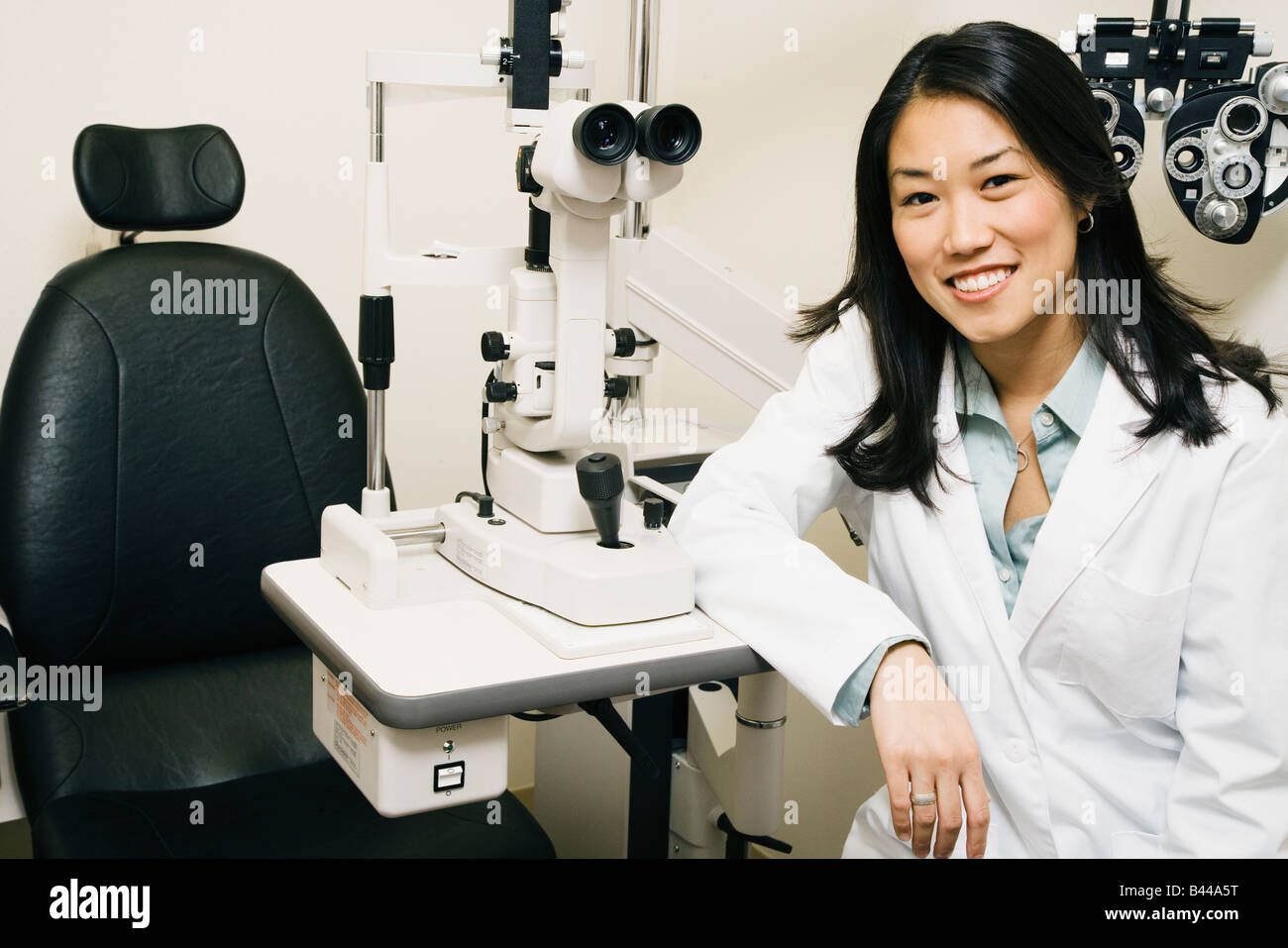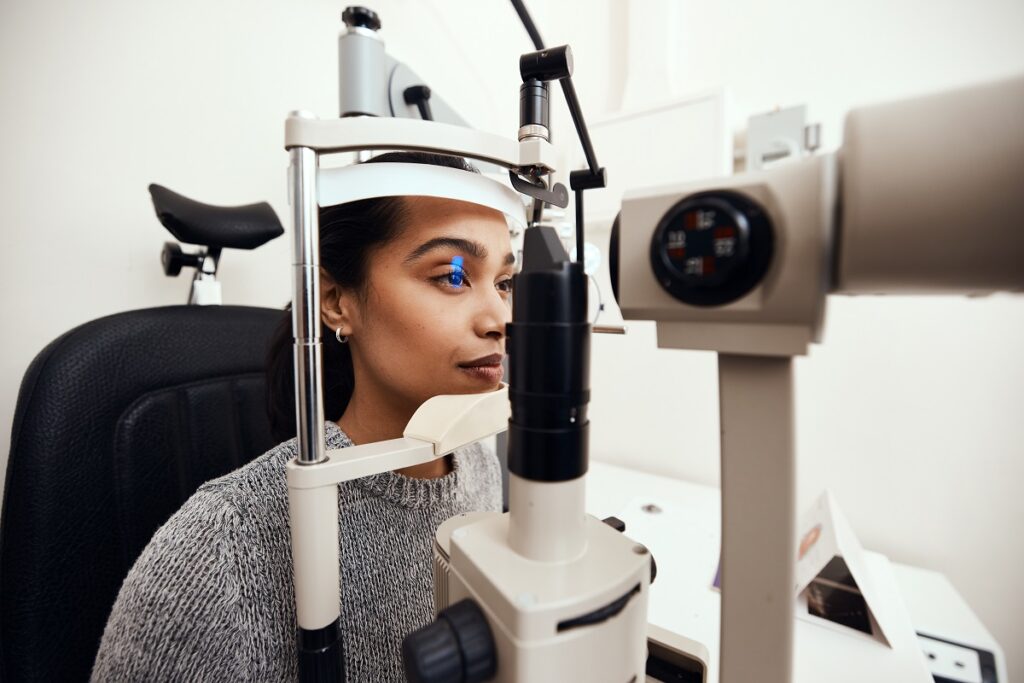The Significance of Regular Exams with an Eye Doctor Optometrist
Wiki Article
Checking Out the most recent Technological Advancements in Optometry and What They Mean for Eye Doctors
From the precision of Optical Coherence Tomography to the nuanced understandings provided by AI-driven analysis tools, these innovations are setting new requirements in client analysis and therapy. As these innovations penetrate the technique, optometrists are encountered with the obstacle of welcoming these tools to boost person results.Technologies in Diagnostic Tools
Advancing the area of optometry, technologies in diagnostic tools have reinvented the means eye treatment professionals examine and detect visual impairments and ocular conditions. The previous years has actually experienced significant technical developments, making it possible for more precise and thorough analyses. Optical Coherence Tomography (OCT), for instance, provides high-resolution cross-sectional pictures of the retina, permitting the early discovery of diseases such as glaucoma and age-related macular deterioration. This non-invasive imaging method has ended up being indispensable in modern optometric method.An additional key technology is the introduction of innovative corneal topography systems, which map the surface curvature of the cornea with precision. These devices are particularly beneficial for suitable contact lenses and identifying corneal conditions. Electronic retinal imaging has changed typical ophthalmoscopy, providing thorough, panoramic views of the retina that assist in detailed visual assessments.
The advancement of wavefront aberrometry has likewise been critical, enabling the analysis of refractive errors with unrivaled accuracy (Eye Doctor Optometrist). This technology assists in personalizing restorative lenses and boosting medical outcomes for refractive surgical procedures. Collectively, these diagnostic advancements empower eye doctors to provide exceptional patient treatment, making sure very early intervention and customized treatment methods, inevitably enhancing aesthetic health and wellness end results
AI in Patient Monitoring
Building on the structure of innovative analysis tools, the unification of expert system (AI) in client administration stands for a transformative leap for optometry. AI systems are progressively employed to improve performance, accuracy, and customization in individual care. By assessing large quantities of data, AI can determine patterns and anticipate potential eye conditions, enabling eye doctors to tailor treatments better. This capacity is critical in handling persistent eye illness such as glaucoma and diabetic person retinopathy, where very early detection and continual tracking are vital.In addition, AI-driven systems assist in streamlined client communications and administrative procedures. Automated scheduling, virtual appointments, and individualized follow-up plans not just improve person fulfillment but also enhance time monitoring for professionals. These systems can triage individuals based upon the urgency of their conditions, making sure that those in essential need get punctual focus.
In addition, AI enhances decision-making by providing eye doctors with evidence-based suggestions and therapy paths. By integrating information from electronic health records, AI tools offer insights that educate clinical choices, reducing the threat of mistakes and boosting client outcomes. As AI remains to develop, its function in person monitoring will likely broaden, improving the landscape of optometric care.
Advancements in Retinal Imaging
In the world of optometry, retinal imaging has actually seen amazing technological advancements that are enhancing analysis abilities and person treatment. Developments such as Optical Coherence Tomography (OCT) and fundus digital photography have transformed how eye doctors picture and analyze the retina.Improved imaging modalities like OCT angiography are more refining diagnostic precision. This non-invasive technique maps blood circulation in the retina, offering critical understandings right into vascular health and wellness without the requirement for color shots. Additionally, adaptive optics innovation is being incorporated into retinal imaging systems to fix ocular aberrations, delivering extraordinary image quality. Such innovations promote the recognition of minute retinal changes that might represent condition progression.
Moreover, advancements in expert system are augmenting retinal imaging by enabling computerized evaluation of huge datasets. These systems assist optometrists in identifying patterns a measure of pathology, consequently improving analysis accuracy and performance. Collectively, these developments are changing retinal imaging right into a cornerstone of modern eye treatment, improving end results and increasing restorative possibilities.
Teleoptometry's Expanding Role
Teleoptometry is progressively becoming a vital part of eye treatment, driven by developments in electronic interaction and diagnostic devices. This is particularly advantageous in underserved and country locations where accessibility to specialized eye treatment is frequently minimal.The assimilation of artificial intelligence (AI) more boosts teleoptometry, making it possible for the analysis of visual information and assisting in the discovery of ocular problems such as glaucoma and diabetic retinopathy. AI-powered formulas can rapidly analyze complicated imaging data, supplying optometrists with useful insights that strengthen scientific decision-making.
In addition, teleoptometry supports connection of care via smooth assimilation with digital health records (EHRs), permitting optometrists to keep thorough client backgrounds. This guarantees that people obtain customized and regular treatment also when speaking with different experts.
Despite these advantages, obstacles stay, including making sure data protection and taking care of person expectations. Teleoptometry stands for a significant stride in the direction of more easily accessible, reliable, and patient-centered eye treatment. As innovation develops, its role is poised to broaden even more.

Future Patterns in Eye Treatment
A myriad of innovative patterns is established to reshape the future of eye care, driven by technological innovations get more and the progressing requirements of clients. One considerable pattern is the assimilation of expert system (AI) in diagnostics, which guarantees to boost the precision and effectiveness of eye assessments. AI algorithms can analyze vast quantities of data from retinal photos, potentially spotting problems like diabetic person retinopathy and glaucoma earlier than standard methods.Furthermore, tailored medicine is acquiring grip in optometry, with hereditary testing informing personalized therapy plans. This technique intends to maximize patient results by tailoring interventions to private genetic accounts. Wearable modern technology, such as smart contact lenses, is also coming up, providing real-time surveillance of intraocular stress or glucose degrees, therefore giving constant insights into ocular and systemic wellness.
The fostering of increased fact (AR) and virtual fact (VR) in training and client education is browse this site another arising pattern. These modern technologies supply immersive experiences that can improve understanding and abilities both for clients and eye doctors. As these patterns advance, optometrists need to remain abreast of technical advancements to offer innovative treatment, guaranteeing enhanced person end results and fulfillment in the dynamic landscape of eye treatment.
Conclusion

Jointly, these diagnostic developments encourage optometrists to supply remarkable individual care, guaranteeing very early intervention and customized therapy methods, eventually enhancing visual wellness results.

As these modern technologies continue to progress, optometrists have to adjust and include them into method, inevitably enhancing operations effectiveness and elevating the criterion of eye treatment delivered to people.
Report this wiki page